Dinosaurs’ reign on Earth ended explosively (and then dustily, as we’ll mention in this story) when an asteroid slammed into Earth some 66 million years ago. But the dinosaurs—and the diverse ancient creatures they shared the planet with—have kept many secrets locked away in their fossilized remains, secrets which paleontologists work tirelessly to extricate. Here are a handful of the coolest discoveries made about dinosaurs and other ancient life in 2023.
A teenaged tyrannosaur (and its final feast)
 The gorgosaurus specimen with its gut contents.
The gorgosaurus specimen with its gut contents.
In December, a team of paleontologists announced a stunning find: a teenaged gorgosaurus, a type of tyrannosaurid, with the hindlimbs of two year-old dinosaurs in its stomach. The finding clarified how tyrannosaur diets change as the animals grow. You can read more about the discovery here.
The North Dakotan ‘sea dragon’, Jormungandr
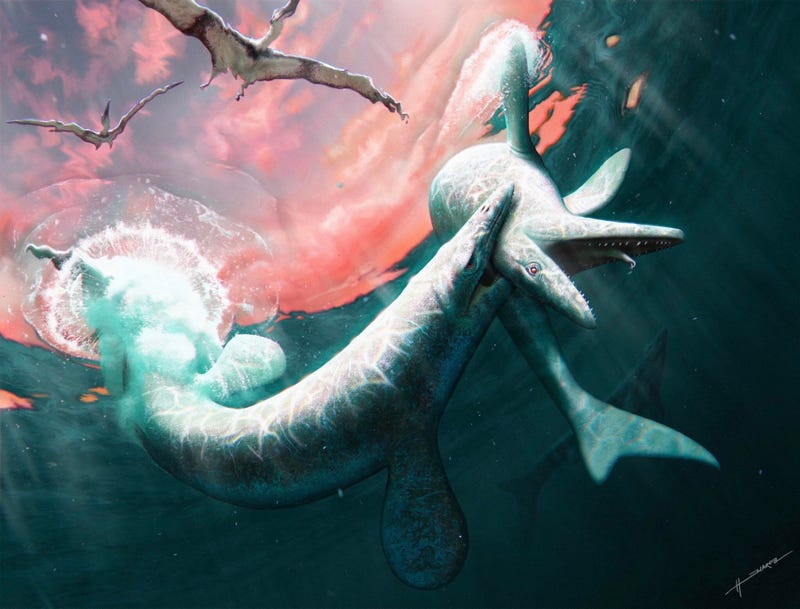 Two young J. walhallaensis individuals fighting.
Two young J. walhallaensis individuals fighting.
In October, paleontologists announced the discovery of Jormungandr walhallaensis, a 24-foot-long lizard that inhabited the Western Interior Seaway about 80 million years ago. Mosasaurs were massive reptiles that ruled the world’s oceans in the Cretaceous period, and J. walhallaensis—among the northernmost mosasaurs found in the ancient seaway—was no exception. The fossil is named for the son of Loki in Norse mythology as a nod to its findspot, near Walhalla, North Dakota.
Airborne dust may have killed off the dinosaurs
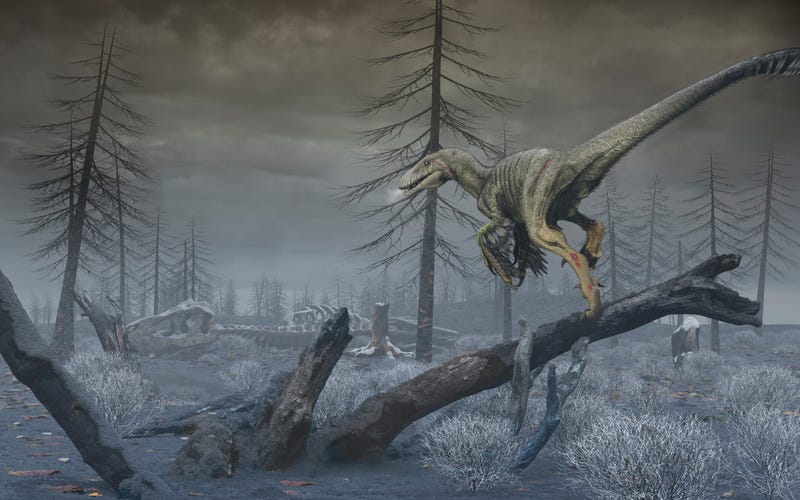 A paleoart reconstruction of North Dakota in the months following the Chicxulub impact.
A paleoart reconstruction of North Dakota in the months following the Chicxulub impact.
Perhaps no mass extinction has gotten greater attention (to the chagrin of modern conservationists) than the Cretaceous-Paleogene event, which saw about three-quarters of life on Earth die out after an asteroid slammed into the ocean just off the Yucatán peninsula. This year, a group of researchers posited that dust kicked up by the impact was the main driver of the mass extinction; by their calculations, the dust could have stayed in Earth’s atmosphere for 15 years, blotting out the Sun and thus cooling the planning by about 27 degrees Fahrenheit (15 degrees Celsius). You can read more about the team’s findings here.
A mammal and a dinosaur grappling
 A Psittacosaurus interacting with a Repenomamus robustus, an ancient mammal.
A Psittacosaurus interacting with a Repenomamus robustus, an ancient mammal.
In July, a team of paleontologists published a paper in Scientific Reports describing a thrilling, 125-million-year-old fossil: a possum-sized mammal biting down on a beaked dinosaur. The fossil is so incredible because it shows mammals and dinosaurs interacting; though the groups of animals shared the Earth, fossilized examples of it are rare.
Fossilized trilobite guts
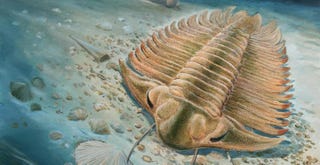 An illustration of a trilobite on the ocean floor.
An illustration of a trilobite on the ocean floor.
This year, paleontologists showed off a neat find: an absolutely stuffed species of trilobite, which had fossilized from its carapace to the crushed-up critters in its digestive tract. Thanks to the circumstances of its preservation—the Ordovician critter was buried in a mud flow at the bottom of the sea—the research team was able to see the ostracods and bivalves the animal had eaten, as well as marks on its carapace that suggest scavengers had burrowed into the animal after its death. Sure, they’re not as popular dinosaurs, but such an immaculately preserved trilobite deserves a spot on this list. Read all about it here.
An agate… in a dinosaur egg
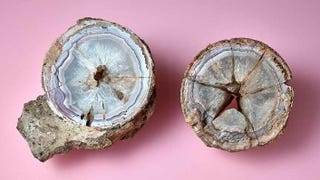 An agatized dinosaur egg.
An agatized dinosaur egg.
Feast your eyes on this agate, which researchers concluded this year formed inside the egg of a large dinosaur. The agate was found in India and registered in the collections of London’s Natural History Museum 140 years ago, though the egg in which the agate formed is about 60 million years old. The researchers believe the egg probably belonged to a titanosaur, the largest land animals to ever live and which were common in Cretaceous India.
A 230-million-year-old pterosaur precursor
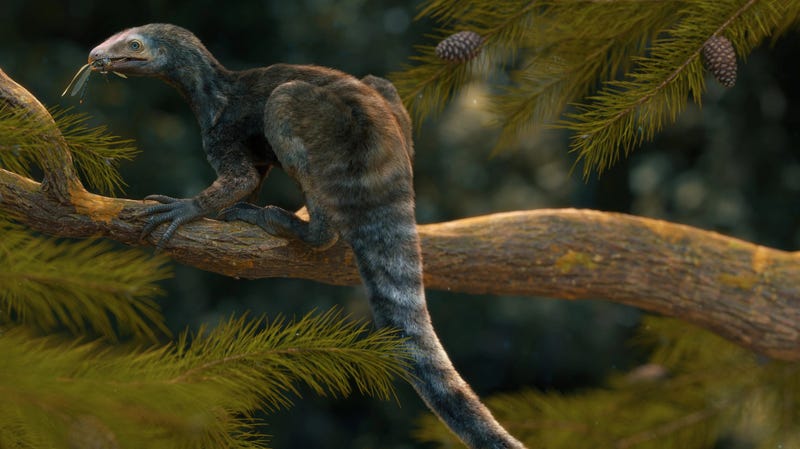 A paleoart reconstruction of Venetoraptor gassenae.
A paleoart reconstruction of Venetoraptor gassenae.
In August, a team of researchers announced the discovery of a peculiar reptile with scimitar-like claws. The 230-million-year-old fossil of a lagerpetid, a group that likely gave way to flying pterosaurs, included cranial remains, which gave the researchers an opportunity to better understand the true diversity of the Triassic animals. Read all about the lagerpetid—Venetoraptor gassenae—here.
Titanosaur egg nests across India
 An unhatched titanosaur egg (left) and an egg outline (right).
An unhatched titanosaur egg (left) and an egg outline (right).
Remember the titanosaur egg from two slides ago? Well, this year paleontologists in India announced the discovery of 92 titanosaur nests across India, showing the geographic spread of the ancient giants. Read more about this prolific find here.
T. rex had lips (mwah)
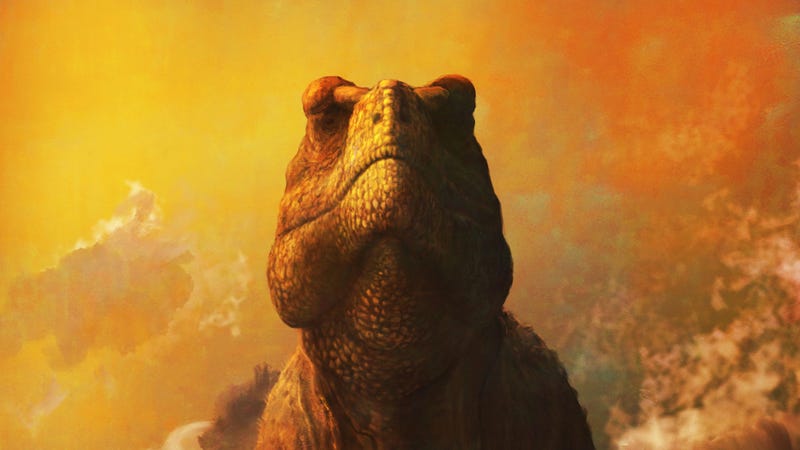 A tight-lipped T. rex, in a paleoart illustration.
A tight-lipped T. rex, in a paleoart illustration.
Research this year suggested that meat-eating theropod dinosaurs like T. rex and Velociraptor actually had skin that covered their large, deadly teeth. Spare a thought for the paleoartists who now need rework their illustrations of these suddenly less-terrifying beasts. Read all about the findings here.
A mammal… inside a dinosaur
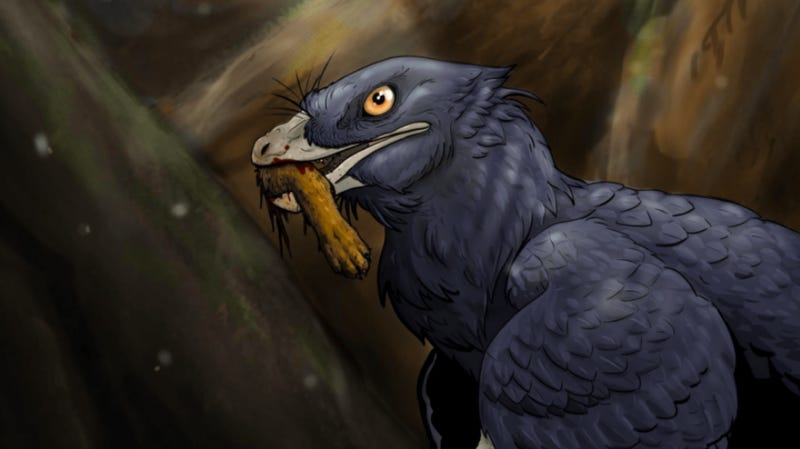 A paleoart illustration of Microraptor eating a mammal’s foot.
A paleoart illustration of Microraptor eating a mammal’s foot.
Okay, this one is technically from December 2022, but close enough. Paleontologists found a small, four-winged dinosaur—Microraptor zhaoinus—with a mammal’s food in its stomach. More dino-mammal interactions please, paleontology! We can’t get enough of them. Read more.
Dozens of dinosaurs are getting renamed
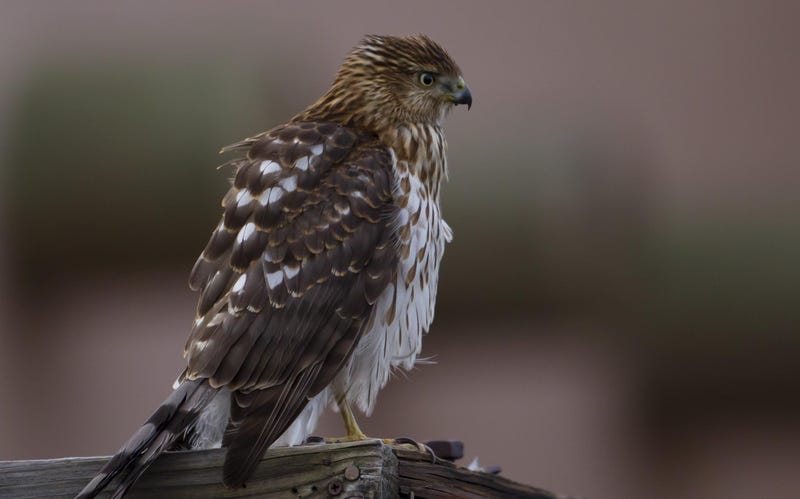 A juvenile Cooper’s hawk, which will soon be renamed.
A juvenile Cooper’s hawk, which will soon be renamed.
In case you missed it: In November, the American Ornithological Society announced that the common English names of a swath of North American birds (the only living dinosaurs) would be scrapped. The goal is to remove human-names from birds, since many avian namesakes weren’t the nicest people. Read more about this ongoing drama.
>>> Read full article>>>
Copyright for syndicated content belongs to the linked Source : Gizmodo (AU) – https://gizmodo.com.au/2023/12/the-coolest-dinosaur-age-discoveries-of-2023/

























![Forest ecology cannot be reduced to arithmetic, says M.I. Varghese [Interview] – Mongabay-India](https://earth-news.info/wp-content/uploads/2025/12/328946-forest-ecology-cannot-be-reduced-to-arithmetic-says-mi-varghese-interview-mongabay-india-120x86.jpg)





